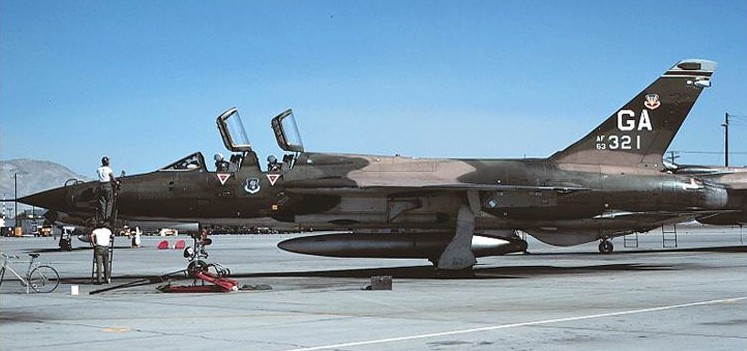
2 March 1978: Major Charles Thomas Fulop and First Lieutenant William A. Stone departed George Air Force Base, Victorville, California, in a Republic F-105G Thunderchief, 63-8321, call sign “Thud 71.” Their mission was a routine instrument training flight, making instrument approaches and departures at NAS Point Mugu on the southern California coast, then return to George AFB.
The weather surrounding Point Mugu was poor, with heavy clouds, rain and fog. Thud 71 made an instrument approach to the airfield and then initiated a missed approach, a normal procedure for a training flight. However, while climbing out, the pilot, Major Fulop, radioed Mugu Approach Control that he had a problem and requested an immediate return to George AFB. His request was approved.
Approach Control then lost the fighter bomber’s radar transponder signal. Fulop declared an emergency, and requested an immediate return to Point Mugu for landing. He stated that the altimeter had failed and that he was trying to climb above the clouds.
Moments later, witnesses in Thousand Oaks and Newbury Park saw the F-105 diving out of the overcast. Major Fulop initiated the ejection sequence for the Electronics Warfare Officer, Lieutenant Stone, in the back seat. Stone was ejected and parachuted to safety. He suffered a broken arm.
The witnesses said that the pilot was obviously steering the Thunderchief away from homes surrounding the open space of Wildwood Regional Park. Thud 71 crashed on the west side of Hill Canyon. The airplane exploded on impact and Major Fulop was killed.
The crash site is less than two miles (three kilometers) from where I am now sitting.
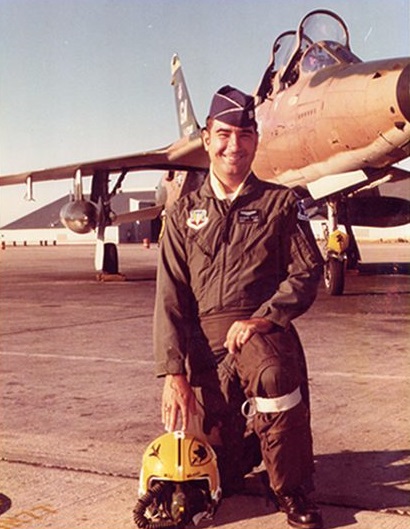
Charles Thomas Fulop was born 6 October 1946 at Barberton, Ohio. He was the second son of Louis James Fulop and Elizabeth Theresa Ittes Fulop. He graduated from Copley High School in Akron, Ohio. He then attended Miami University, Oxford, where he was a member of the Delta Chi fraternity, graduating in 1968.
Fulop joined the United States Air Force, 14 May 1969. He was trained as a B-52 navigator. Later selected for flight training, Captain Fulop was assigned to Class 73-06 at Laughlin Air Force Base, Del Rio, Texas. He was an Outstanding Graduate and was awarded his pilot’s wings, 26 February 1973. Captain Fulop was then assigned to a McDonnell Douglas F-4 Phantom II squadron at Homestead Air Force Base, Florida.
On 20 December 1969, Charles Fulop married Miss Cheryl P. Lewis at Sacramento, California. They would have two daughters, Michelle and Kelley.
Major Fulop was buried in the Veteran’s Court at Saint Mary’s Catholic Cemetery, Sacramento, California.
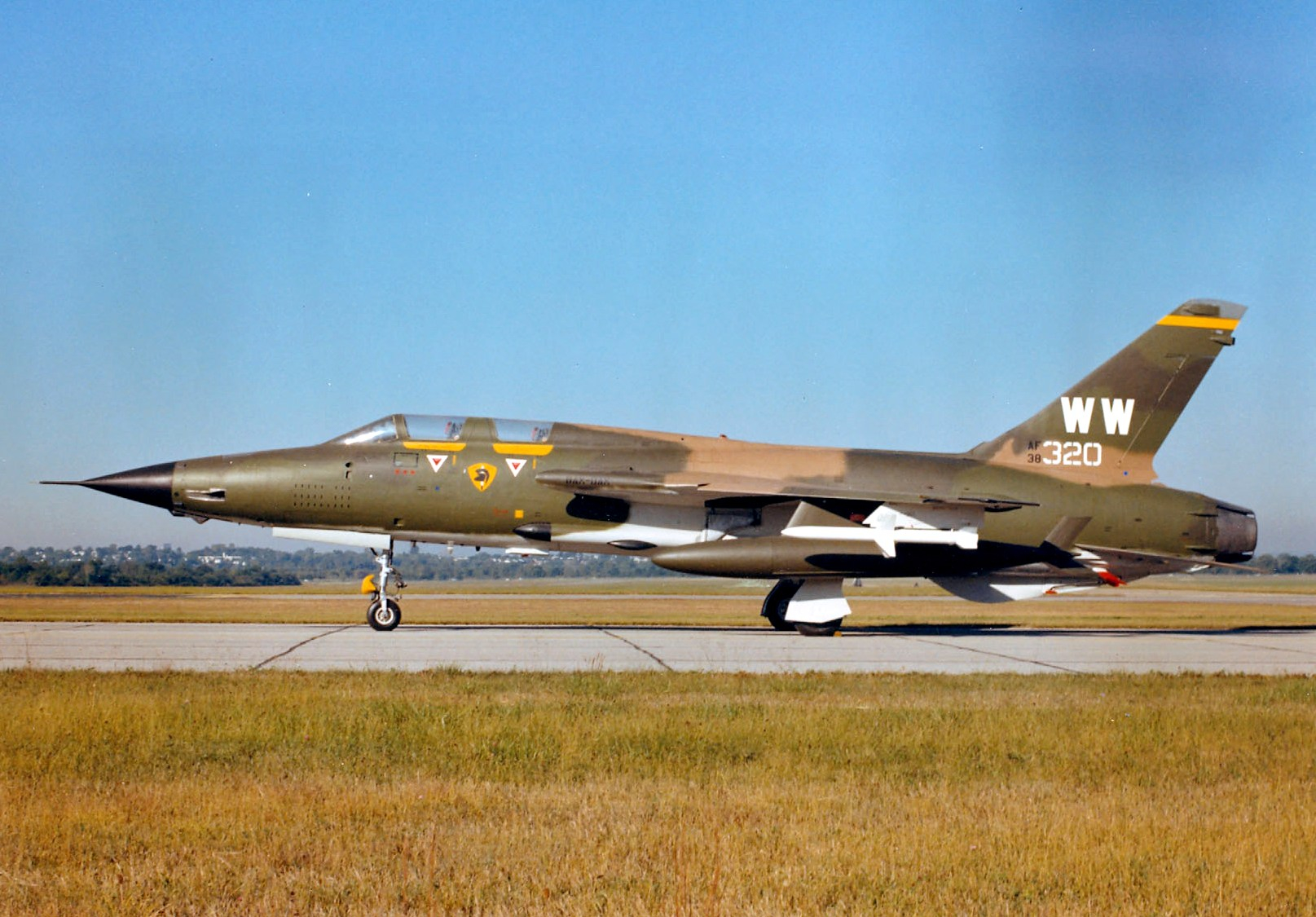

The F-105F/G Thunderchief was 67 feet (20.422 meters) long with a wingspan of 34 feet, 11 inches (10.643 meters) and overall height of 20 feet, 2 inches (6.147 meters). Its wings were swept 45° at 25% chord. The angle of incidence was 0° and there was no twist. The wings had 3° 30′ anhedral. The total wing area was 385 square feet (35.8 square meters). Modified to the Wild Weasel III configuration, it had an empty weight of 31,279 pounds (14,188 kilograms), and a maximum takeoff weight of 54,580 pounds (24,757 kilograms).
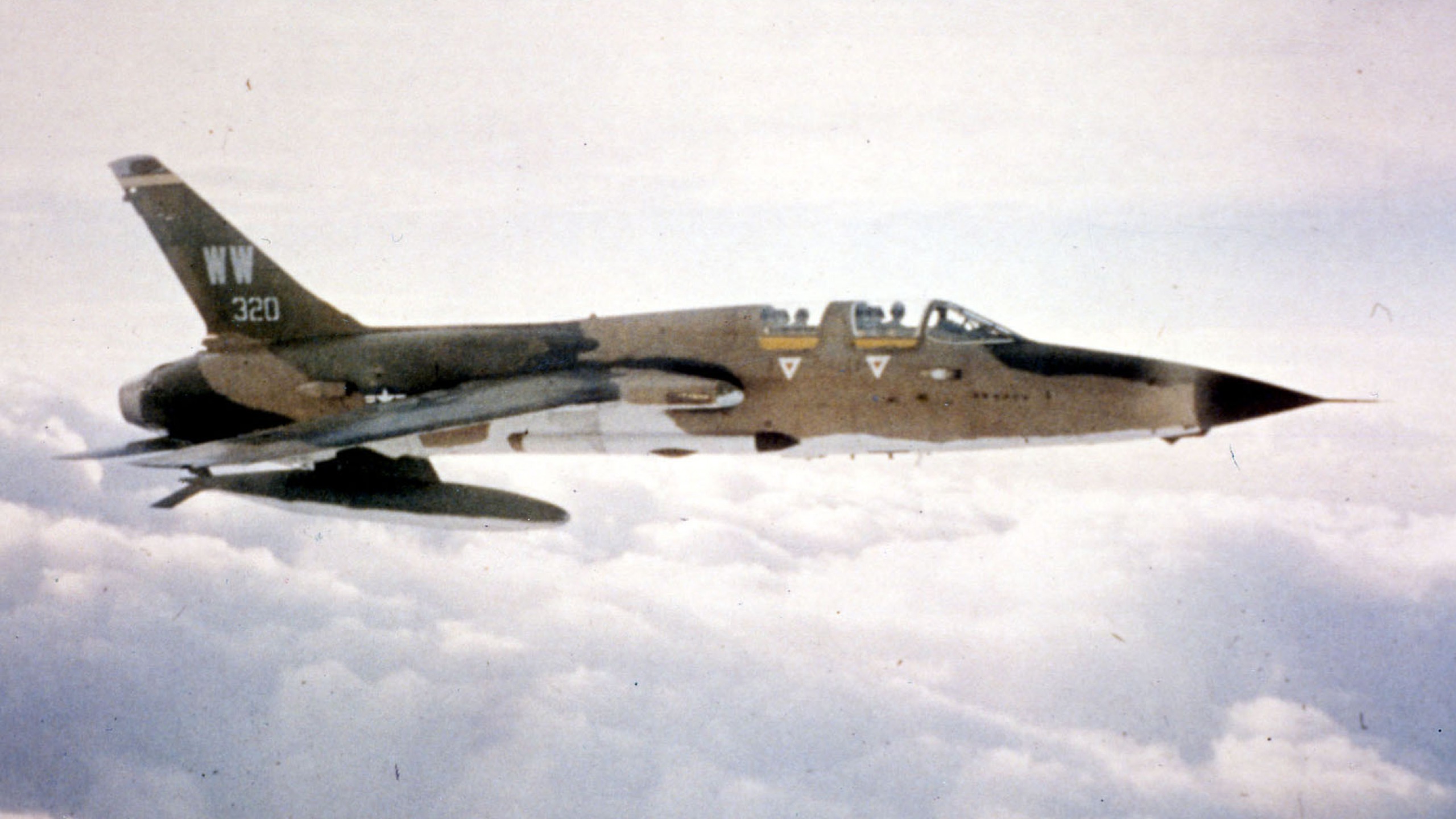

The F-105G Wild Weasel III had a cruising speed of 514 knots (592 miles per hour/952 kilometers per hour). Its maximum speed was 681 knots at Sea Level—0.78 Mach—and 723 knots (832 miles per hour/1,339 kilometers per hour) at 36,000 feet (10,973 meters)—Mach 1.23. It could climb to 30,000 feet (9,144 meters) in 28.0 minutes. The F-105G’s combat ceiling was 43,900 feet (13,381 meters), and it had a combat radius of 391 nautical miles (450 statute miles/724 kilometers). The maximum ferry range, with external fuel tanks, was 1,623 nautical miles (1,868 statute miles/3,006 kilometers).
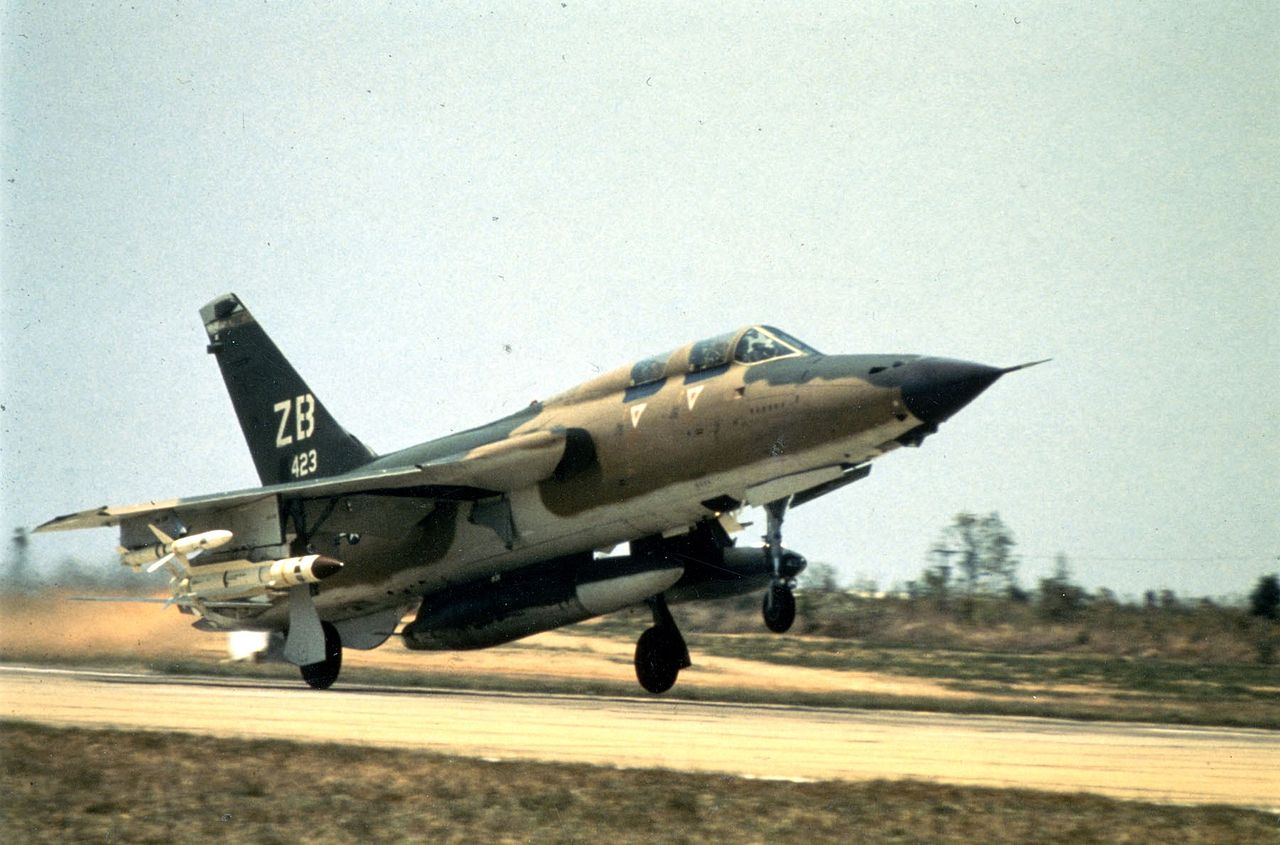
The Wild Weasel III was armed with one M61A1 Vulcan 20 mm six-barrel rotary cannon with 581 rounds of ammunition, one AGM-78 Standard High-Speed Anti-Radiation Missile (HARM), and two AGM-45A Shrike anti-radiation missiles.
65 F-105Fs were converted to the F-105G Wild Weasel III configuration. Republic Aviation Corporation built 833 F-105 Thunderchief fighter bombers at its Farmingdale, New York, factory. 334 of them were lost in combat during the Vietnam War.
Thud 71’s sister ship, Republic F-105G Thunderchief 63-8320, shot down three enemy MiG fighters. It is on display at the National Museum of the United States Air Force, Wright Patterson Air Force Base, Ohio.

© 2021, Bryan R. Swopes
i remember the date of the Crash ,didn’t know the exact month or day “but”the year i
did, i was living in the apartments near the crash site in Thousand Oaks ca,i have had
a Tumor Removed from my Head (Surgery)recently2014 and am recovering slowly still
my memories i am working on trying to remember,in 1977 i had just gotten out of the
USN and Married back then and “i” was on my front porch when “i”Observed the fighter
Jet Circle and Advoid people out the ground and the Jet went down behind a few Businesses and Crash in deep field behind the Purlator “i” think was the name of the
Company back in those days.”i” also remember the Crash site became locked down
by the Military real fast.
The entire area around Hill Canyon has been built up since the crash in 1978. You are correct about the Purolator Company being there. There was also the Rancho Conejo Airport, which closed in the mid-’60s. The concrete building pads for the hangars were there for a very long time. According to the X-Hunters though, the crater made by the F-105 was still visible when they visited the site in 2001.
Great site! Today’s posting was especially touching that Maj. Fulop sacrificed himself in order not to crash into houses. What heroism! It would seem to me there should be some kind of medal or recognition due him.
While I enjoy all the technical aspects of your site, it’s great that you bring up the more human aspects of the history of Aviation, because it was the men who did these things, not just the airplanes.
I especially like when you dig way deep to the World War 1 era and even pre-World War 1. That was some flying!
Keep up the great work! G Z
Thank you very much, George. I agree with you. I try to be as precise as I can with the technical details, but it is the People who really made History. Many times there is so little information that can be found, but I keep trying. Each of these posts is the result of many, many hours of research. I have been writing TDiA for almost five years, and have been through the calendar a few times, so many articles have previously been published. I always review them and try to make corrections, or expand with new or more complete information, and better photographs, before re-publishing. I specifically recall the afternoon that Major Fulop was killed. I was driving on the eastbound U.S. Route 101 (the “Ventura Freeway”) in heavy rain, just to the south of the impact point. It was not a good day to be flying. My mother was working at Northrop Corporation in Newbury Park and both heard and felt the Thunderchief crash.
I don’t remember this and can’t imagine why I can’t. Thank you for this and all of your work on this site.
Thank you, Barry. There was no shortage of F-105 accidents.
I was a jet Engine mechanic at George AFB 73 -78. Worked on this aircraft many times.
Thanks, Jim.
I was stationed at George AFB and launched 321 or his wing man that fateful day. I remember the wing man returning and waited for the second aircraft. Once the aircraft was shut down, I ask the pilot if the other aircraft was broke somewhere else. The look on his face told the story.
Thanks, Manny. A terrible day it must have been. I was in the west end of Ventura County that day, but my mother was at the Northrop plant in Newbury Park. She heard and felt the impact.
I seem to recall it a bit differently. It wasn’t an altimeter failure, that is a minor problem. 321 had lost its alternating power generator. That failure caused all attitude gyros and indicators (which were AC driven) to fail, 321’s Inverter came on, restoring artificial horizon indication, but only functioned for less than a minute.
With no attitude indications, while in the clouds, it is almost impossible to maintain directional control, as any motion of the aircraft generates g forces which eliminate the ability to determine which direction is “UP”.
Shortly after the incident, ALL F105’s were fitted with a 3 inch DC powered standby attitude indicator so future AC failures would not be catastrophic in inclement weather.
I believe that you are correct about the electrical failure. The F-105 had a combined Altitude-Vertical Velocity Indicator—a vertical “tape” indicator, rather than a normal round instrument. This was controlled by a central air data computer. Also, though it was reported that Major Fulop reported the altitude indicator had failed, he may have been misunderstood by the controllers
Perhaps ‘Laughlin’ AFB was autocorrected to become ‘Lackland’ AFB.
Laughlin AFB is in Del Rio, TX not Lackland.
Please check the climb time to 30k feet…28.0 minutes??!!
Tom, according to the F-105G USAF Characteristics Summary, Nov 72, “TIME TO CLIMB: 28.0 min, S.L.to 30,000 ft at combat wt, max power”
It appears we are neighbors.
Thank you for these stories.
Take care, stay safe.
How can you forget something as sad as this. I was the squadron commander’s wife and had to go to Cheryl, Charlie’s wife who had just become a widow, my friend. It was one of the hardest things I’d ever had to do. There were other people there that didn’t help. Cheryl asked my husband, Mark, who that colonel was that had arrived before us. She had no idea who he was and he was not handling things well. Cheryl asked Mark to , please, ask him to leave her house. He was the Wing Commander and making himself a total nuisance. Why was he there? We were late getting there because we had gone by Capt. Stone’s (Charlie’s bear) home to assure his wife that her husband was okay and on his way home.
Thank you, Sandra.
Such a sad day, it hits home for me as I was working in the Tower that day at Point Mugu… Listening to the air to ground exchanges.. RIP
I was a F-4G flight simulator maintainer at George AFB 1982-1985. There were 3 simulators during my time there, 2 were F-4G Wild Weasel models and one was a F-4D Model for training German pilots.
My father was working in his office on Lawrence Dr in Newbury Park and after hearing the crash, he sprinted across the fields to the site. He was among the first people on the scene. He told me (his 11 year old son) that he saw the body of the pilot and described it in graphic detail. He reported that the backseat officer was hanging in his parachute in a tree or a bush of some kind.
I was a Mechanic on the F-105G, F-4E and F’s, and Gun Pods at George AFB at the time, and remember when the word hit about this accident. There were two others in sort succession after that, one when the aircraft was on final and the other just after the aircraft rotated for takeoff. The engine simply quit: I don’t recall the case, I wasn’t gone shortly after cross training to a different field.
I was on the ramp doing gun pre-flights when the one that had the engine failure on takeoff happened. F-105G of course was very loud on takeoff, we were hearing the normal sound then silence – which got our attention – we saw it head off the runway then lost sight to all the dirt getting thrown up after gear broke and it skidded through the desert. Perhaps Jim F knows of the problem with the engine causing that… My understanding is both of those two incidents involved the same pilot but wasn’t due to anything he did wrong. Then there was the one that came back to us on a flat bed (the front half of it), pilot was on a TDY and landed at Seymour Johnson as part of the trip. A transient alert troop was unfamiliar with the location of the fuel receptacle. Finding the thing that looks like a gas cap near the vertical stabilizer (old 50’s aircraft, right?), he actually got fuel into it, the water injection tank… Apparently the next shift has someone who knew, and the pilot noticed it hadn’t been serviced, by his gauges, and it was taken care of.
However: At takeoff, when the pilot hit the water injection… he did get one heck of a boost for a moment there. Fortunately, he did not get hurt.